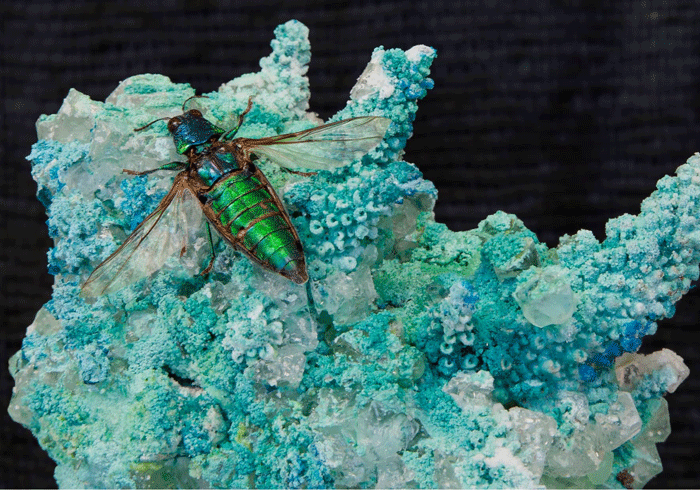ArtReview sent a questionnaire to artists and curators exhibiting in and curating the various national pavilions of the 2019 Venice Biennale, the responses to which will be published daily in the lead-up to the Venice Biennale opening on 11 May.
Ane Graff, from Norway, and nabbteeri, an artist duo from Finland comprising of Janne Nabb and Maria Teeri, are showing at the Nordic Pavilion alongside Ingela Ihrman from Sweden. The pavilion is in the Giardini.
What can you tell us about your exhibition plans for Venice?
Ane Graff: My work has the title States of Inflammation and consists of three largescale glass cabinets with smaller sculptures inside. A multitude of different materials are intermixed in the work: minerals, metals, foodstuff and pigments made by bacteria or industrial waste. The aim of these works is to talk about the interconnectivity of the physical world, and of how all material bodies are affected by what they encounter. For humans, this means our bodies are part of this gigantic material experiment of our time, where new substances are being added to the mix (through industrial production and pollution) and we are losing some of our companion species – namely the bacteria that live on and with us. All of this changes our bodies into something new, something unknown.
Nabbteeri: Our part of the exhibition is a multiform work titled Ethnographies of a homespun spinelessness cult and other neighbourly relations. It can be divided into three connected parts ‘Gingerbread House’, ‘Dead Hedge’ and ‘Compost’, the latter two situated outdoors. Mundane encounters with different nonhuman and human neighbours have shaped the installation both materially and conceptually. The work consists of several portable elements, which serve as vessels for different local materialities, such as organic garden waste or sand. The work also includes a 3D animation, which combines diary-form storytelling with uncanny, often dystopian, imagery.
What does it mean to ‘represent’ your country or region? Do you find it an honour or is it problematic?
AG: As I’m very sceptical towards the idea of national states, I find the idea of “representing” my country an odd thing and quite problematic. I also doubt that the Norwegian art scene could ever feel “represented” by one single artist, as it is such a rich scene with so many different and talented artists (thanks to the fact that we still have funding and working grants).
N: The Nordic Pavilion has some potential to depedestal nationalistic identities since its operations always are of collaborative nature. Also the participating artists are brought together under the vague umbrella of the Nordic, more a mixture of cultures and geographies than national divisions. “Representing” any nation would for us be more or less problematic.
Are the exhibition’s themes transnational or rooted in the local?
AG: Transnational.
N: They are both, actually. The changing climate doesn’t care about borders, and the losses of habitats and ways of life connect beings everywhere. However, although the Arctic warms faster than the rest of the planet, Northern nations go on producing significantly large amounts of carbon dioxide per capita instead of cutting the emissions rapidly. People living in the Nordic region often think they might benefit from the rising temperatures. The thematic grounds are complex, and Nordic mainstream conservative policies don’t seem to be making a difference right now.
If you’ve been the biennale before, what’s your earliest or best memory from Venice?
N: We haven’t been to Venice before, apart from the field trip last August, where we began to form the concepts for the exhibition. Just getting out of the train at Santa Lucia was very special. The sweltering heat was a lot to bare, so we often sought some relief from Lido, where the Alberoni nature preserve was a favourite.
AG: The many renaissance paintings in Venice and, in 2005, falling in love with a Swede.
You’ll no doubt be very busy, but what else are you looking forward to seeing?
AG: Natascha Süder Happelmann and Eva Rothschild.
N: We hope to have enough time to delve into the multitude of the Biennale. We also look forward to visiting the salt marshes at some point.
The Venice Biennale runs 11 May – 24 November
